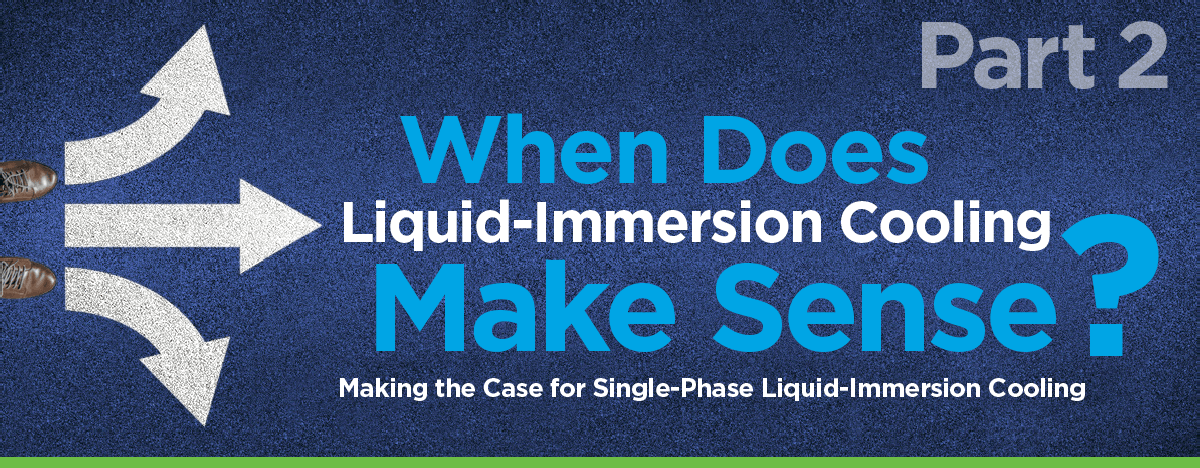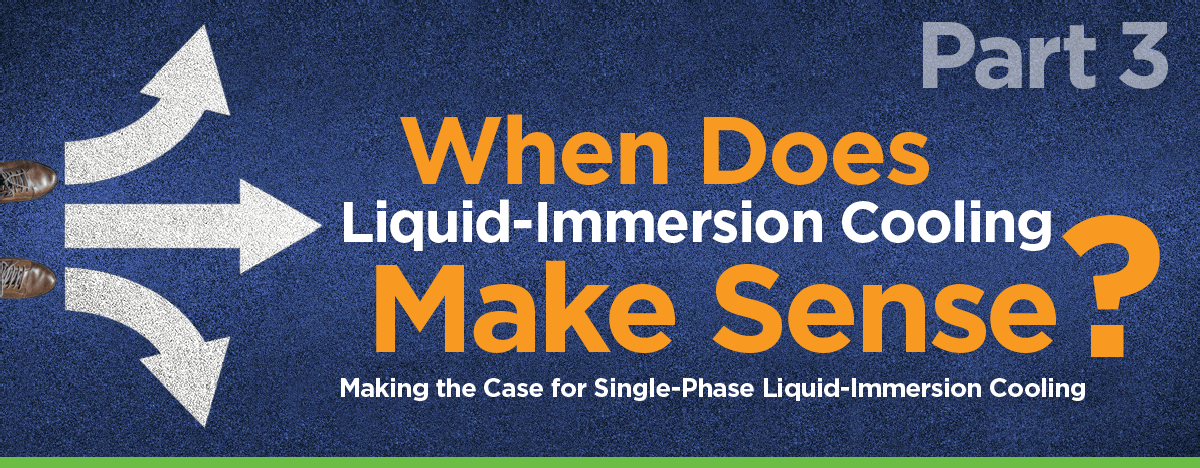You may have heard about liquid-immersion cooling, at least in theory, and thought it might be right for your data center. Perhaps you’ve even done some reading and tucked away a few facts and figures. But, as with any major investment, you likely don’t press the buy button until you have a clear understanding that it can solve your specific challenges.
In this first of a three-part series, we’ll tap into our 13+ years of industry-leading technological development and client installations to provide a real-world view of what our groundbreaking proven solutions offer.
So, when does liquid-immersion cooling makes sense?

These days, data has become the lifeblood of most businesses of any size. Thus, corporate and IT growth must increasingly move in lockstep. As a result, many data centers have discovered they’ve reached the limit of their power envelope and can’t expand. Perhaps that’s happening to you. If so, liquid-immersion cooling is something you should definitely explore.
Extraordinarily energy-efficient, ICEraQ® micro-modular liquid-cooling solutions from GRC can easily be introduced incrementally to replace power-hungry traditional air-cooled racks. They also integrate seamlessly into any existing support infrastructure, such as a chilled water system.
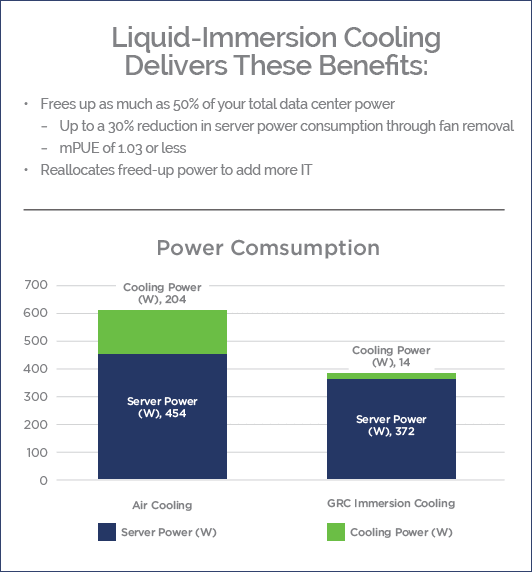
Houston, We Have a Solution
GRC customer CGG, a commercial oil and gas exploration and production company, became a huge proponent of liquid-immersion cooling after they installed an ICEraQ system at their Houston facility back in 2010. But that was no surprise to us. Until then, half their energy usage was devoted to powering traditional air-coolers.
From day one, ICEraQ delivered all kinds of cooling benefits to CGG as well as a 50% savings in energy. That enabled them to expand their compute capacity within the same facility, avoiding the high capital expenditure of building a new facility or investing in a new substation.
Working in 200kW increments, CGG used the money they saved in energy costs to nearly double the number of servers and their per-rack heat load capacity, too. Theirs was, and still is, an amazing success story.
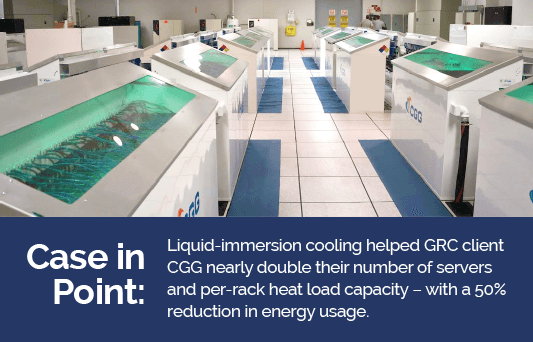
“We saturated the power envelope by putting in twice as many servers as we would normally have, if it had been a traditional air-cooled system.”
– Laurent Clerk VP, Computing Infrastructure, CGG

Economic-driven growth combined with the emergence of next-gen applications like AI, VR and IoT have put traditional air-cooled data centers under threat. There are two major reasons for this. The first relates to rapid growth in the sheer number of servers needed to keep pace with the new workloads. The next pertains to the 15kW-per-rack efficiency limitations of air cooling, which requires blanking plates and the need to spread servers across multiple racks.
Amid this onslaught of new challenges, operators can quickly find themselves maxed out on space.
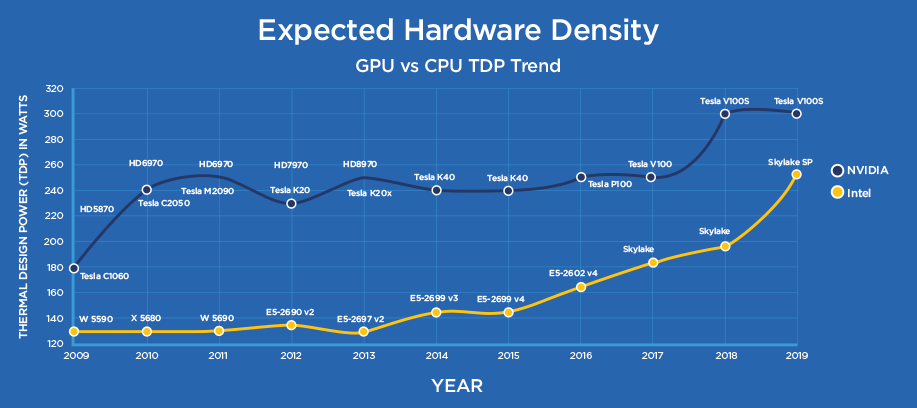
This upward trend in heat is only continuing its inexorable rise. IT infrastructure and operations professionals need to be reacting now.
Everybody, Just Chill Out
Here again, liquid-immersion cooling can easily facilitate this kind of expansion and bring down everyone’s blood pressure at the same time. How? By enabling the consolidation of multiple racks, and by cooling even the highest density racks—up to 100 kW/rack.

There’s no need to move highly sensitive data and applications to the cloud, and no need to build out a new traditional data center. You can use existing space – raised floors or not. Most importantly, there’s no reason to panic. The modular nature of GRC’s liquid immersion cooling solutions makes it easy to quickly build and expand a data center. This enables I&O folks to be very responsive to business needs without the expense of over provisioning.
Pursuing the Great Indoors
Used indoors, ICEraQ micro-modular liquid-cooling solutions let operators easily expand into non-white space (unconditioned) areas that wouldn’t otherwise be thought of as data center space. As an example, with GRC’s help Vienna Scientific Cluster (VSC) succeeded in overcoming a huge space shortage when they built a third-generation of the country’s most powerful and efficient supercomputer.
It gets better. VSC ended up installing our immersion cooling solution in a small 1,000-square-foot basement. Lacking A/C, and offering a low power envelope, such areas would normally be less than ideal choices for a data center. But ICEraQ delivered incredible results and allowed them to fit over 2,000 nodes in these cramped confines. The system, paired with one of our ElectroSafe® coolants, lowered their original cooling energy requirements and helped yield a cooling PUE of 1.03. What’s more, servers designed for immersion (SDI) cut VSC’s energy requirements and server costs, freeing a bigger portion of their budget for more computing power.
Tanks for the Great Outdoors
GRC’s ICEtank® modular immersion cooling solutions are well-suited for outdoor use. Essentially “data centers in a box,” ICEtanks not only let you add capacity very easily – even in harsh, outdoor and out-of-the-way places. They deliver up to 400kw of compute per 40-foot ISO container.
Ask the United States Air Force. They installed an ICEtank adjacent to an existing data center to supplement its capacity. Just one of these 40-foot ISO modules provided the same compute as 153 air-cooled racks.
Case Study: United States Air Force Containerized Data Center >>
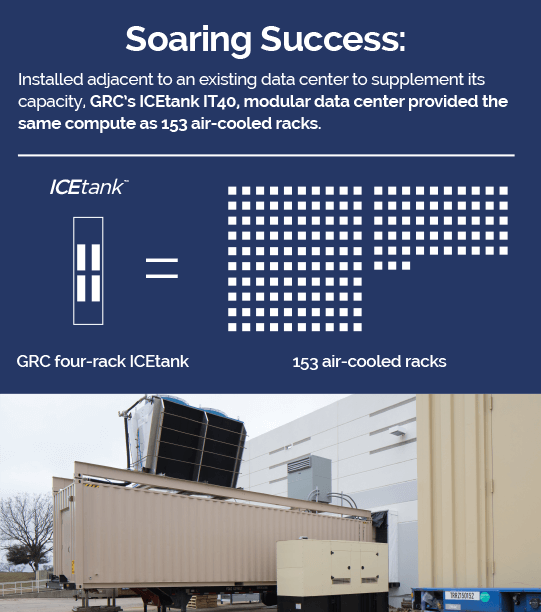

Between engineering design, CFD analysis, aisle containment plus the installation of chillers, air handlers and raised floors, building a new data center can give anyone sticker shock. That’s before you even think about aggregate per-watt costs, which can range from $5 to $20 or more per watt depending on the scale and complexity of your data center.
There has to be a better way. Fortunately, with liquid-immersion cooling, there is.
GRC’s simple, turnkey liquid-immersion cooling design is very capital and operationally efficient, resulting in an economically compelling alternative to traditional air-cooled data center designs. Our systems can reduce data center CAPEX up to 50%, in part by avoiding traditional white space build costs.

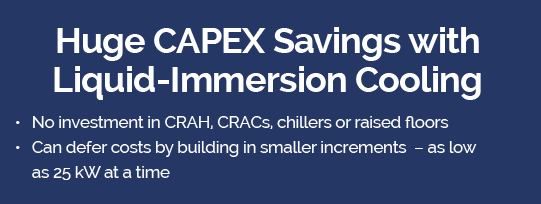
Famous for their cavernous black budgets, even the NSA likes to save money. Accordingly, their Advanced Computing Research Team installed an ICEraQ solution in their Laboratory for Physical Sciences at the University of Maryland. Although the actual performance numbers are top-secret (remember, we’re talking about the NSA), the agency was sold on ICEraQ’s proven ability to slash CAPEX up to 50% and reduce energy costs for cooling a full 95%.
Does liquid-immersion cooling make sense for your data center?
Most likely — Yes! Why not send us an email at ContactUs@grcooling.com and find out for certain? A GRC associate will reach out and run the numbers for you.

